Art & Exhibitions
Zoya Cherkassky’s ‘October 7 2023’ Series Premieres at New York’s Jewish Museum
A rapid-response solo exhibition, inspired by art history, reflects on the present.
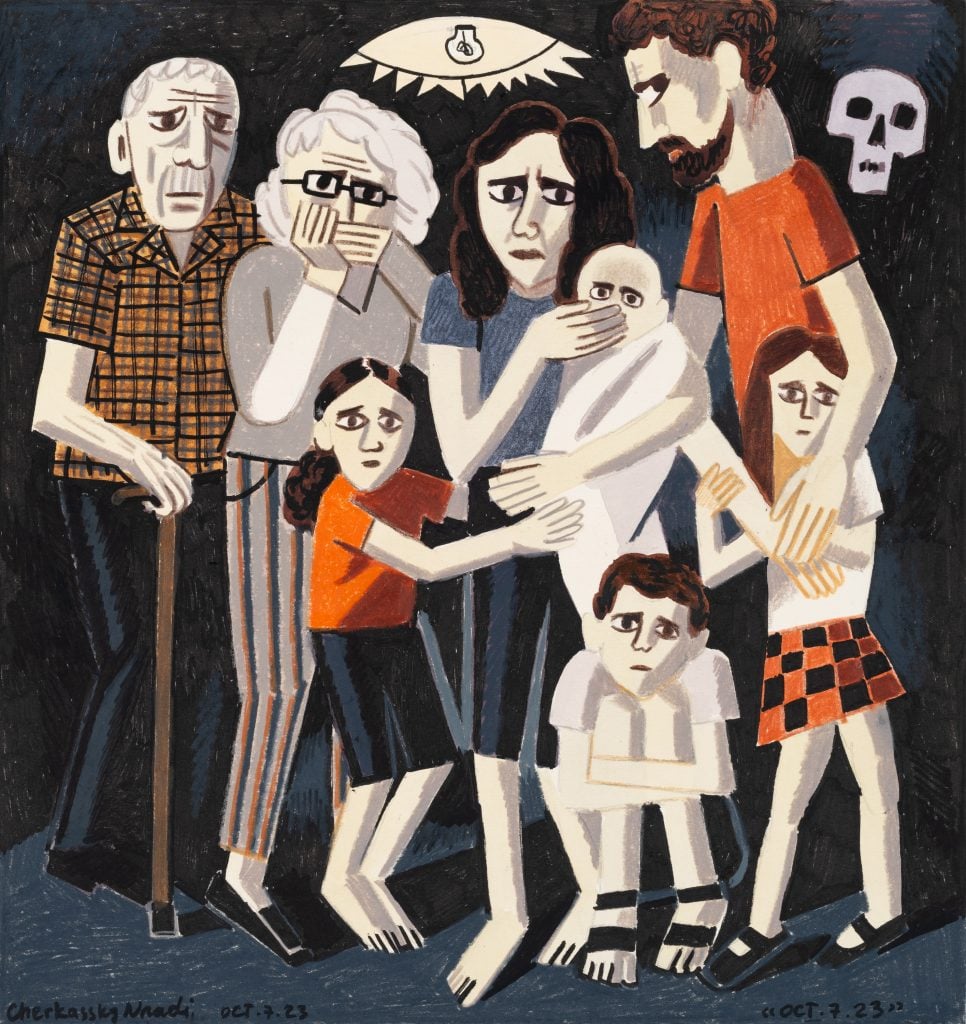
A rapid-response solo exhibition, inspired by art history, reflects on the present.

Katya Kazakina

Ten days after the October 7 attack on Israel by Hamas, when the photographs of murder, torture, and kidnappings appeared all over the news and social media, artist Zoya Cherkassky posted her first artwork about the worst slaughter of Jews since the Holocaust.
Cherkassky, who immigrated to Israel in 1991 from the former Soviet Union, followed the grim toll in disbelief: 1,200 people murdered and 240 taken hostage.
“This was the only thing I could think about,” she said in an interview from her home in Ramat Gan, a suburb of Tel Aviv. “Normally my work is based on what I see, what’s around me. It was obvious that this would be the subject of my work.”
Now, the 12 mixed-media works on paper comprising Cherkassky’s “7 October 2023” series are installed at the Jewish Museum in New York as part of its expanded programming to address the war in the Middle East and its reverberations around the world.
One of the first initiatives by the Jewish Museum’s new director James Snyder, it will include installations and public talks, examining how artists respond to conflict and war through contemporary and historic lens. The show has arrived quickly for a major museum, opening on December 15, two months since Hamas’s attack.
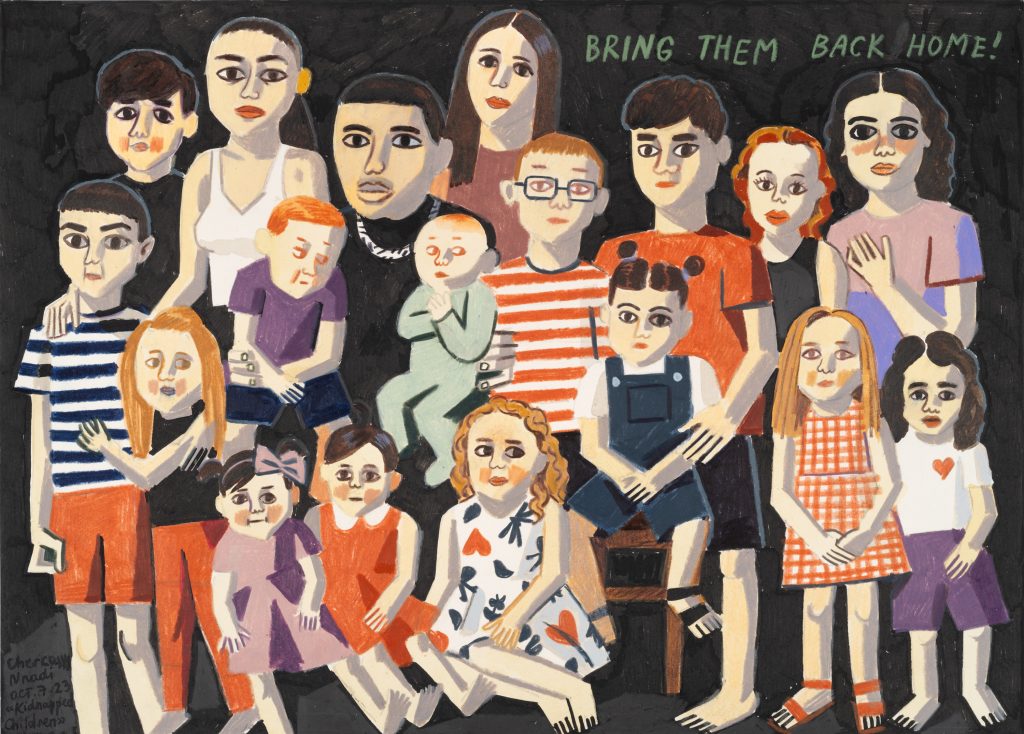
Zoya Cherkassky, Bring Them Back Home (2023). Courtesy: Fort Gansevoort.
The project was key for Snyder, who took the reins of the Jewish Museum’s on November 1, encountering an art world (and world) divided over the war in the Middle East. “We felt it was important to demonstrate this kind of action through a cultural lens and to do it quickly,” Snyder said. He described Cherkassky’s series as “art activism.”
From the moment Snyder arrived, he set out plans to use the museum’s mandate—of exploring Jewish identity throughout history and across the global diaspora —to “realize a path to a brighter future and to find restorative pathways to the humanism that is the essence of our being,” he said in his first letter to the museum community.
“This shows how art responds to and resonates with things that happen. And we can see this in history. You can think of artists throughout time who’ve done it,” said Snyder. “You can see how Dadaism grew out of the chaos of World War I or abstraction grew out of the chaos of World War II.”
The Israel Museum, where Snyder served as director for 22 years, gave Cherkassky a solo exhibition in 2018. He was a fan and kept abreast of her work, visiting her solo show at the Fort Gansevoort gallery in New York earlier this year. So did Darsie Alexander, the museum’s chief curator.
Cherkassky created the series in Berlin, where she fled on October 9 with her 8-year-old daughter, leaving her mother and Nigerian-born husband behind in Israel. Modest in size (10-by-13 inches), the drawings were easy to transport and only needed to be framed for the installation.
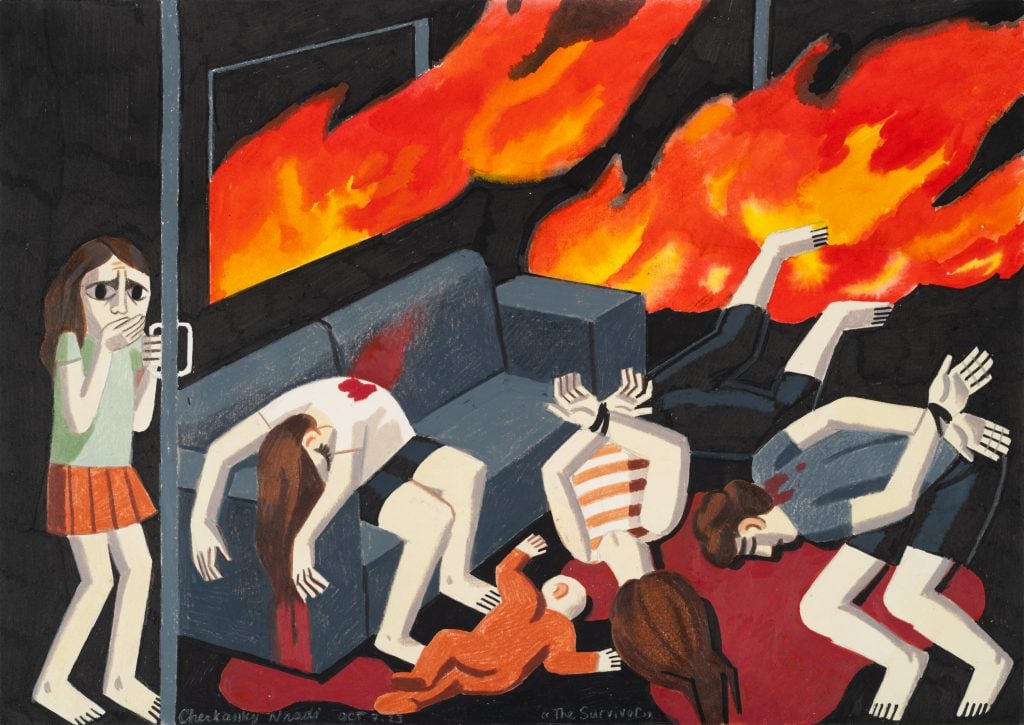
Zoya Cherkassky, The Survivor, (2023). Courtesy: Fort Gansevoort.
“There were so many sirens and then you could hear the explosions,” the artist said. “My daughter was shaking all over. I didn’t know if there would be serious bombardment and decided to leave with her.”
Flames, blood, ashes, tears, screaming mouths, and tied hands appear in Cherkassky’s 12 haunting works, where frantic and forlorn figures are set against black backgrounds. She turned to the visual language of artists who depicted tragedy and war in the first half of the 20th century: Pablo Picasso, Ernst Ludwig Kirchner, and Max Beckman. She used pencils, watercolor, and wax crayons. “Somehow through these artists I was able to talk about this tragedy,” she said.
The early images of the atrocities at Kibbutz Be’eri made Cherkassky think of Guernica, one of Picasso’s most famous paintings, created following German bombing of the Basque town in 1937.
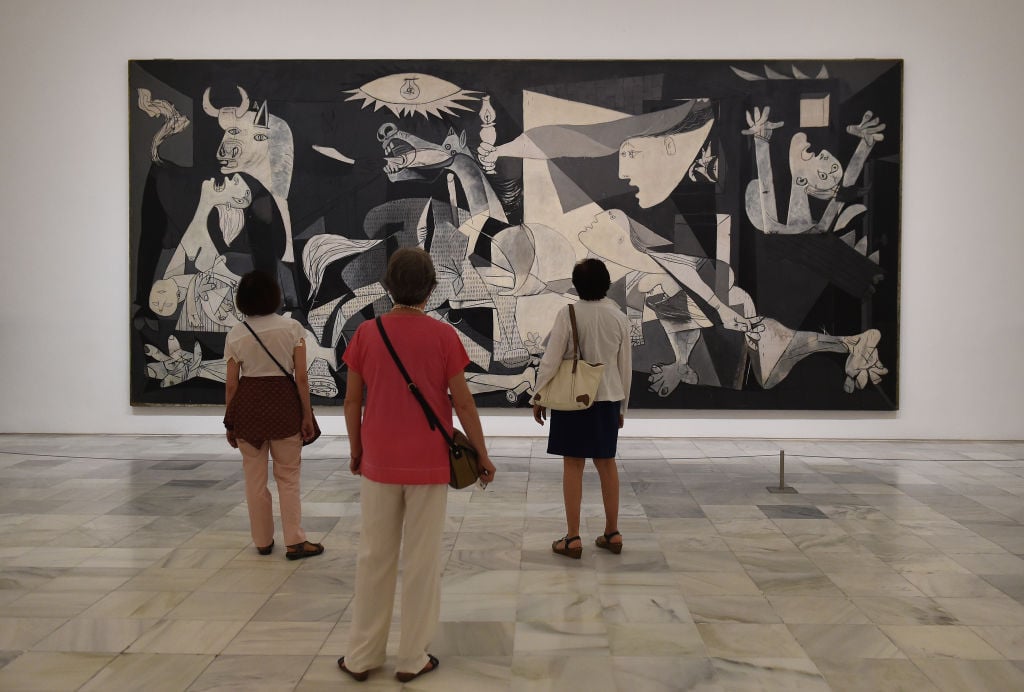
People look at Pablo Picasso’s Guernica (1937) at the Reina Sofia Museum. Photo by Denis Doyle/Getty Images.
Kidnapped Women shows a multi-generational group of weeping and scared women walking barefoot, their colorful dresses set against black background. The elderly woman in the center of the group has “A24102” tattooed on her arm, alluding to her concentration camp past.
The Terrorist Attack at Nova Music Festival depicts young women running through a field, marred with blood and fallen bodies, their hair blowing in the wind, eyes huge with fear—an antithesis to the static Surrealist maidens by Paul Delvaux. That so many characters in her drawings are women is not accidental; Cherkassky specifically wanted to call attention to sexual violence against women, including young women, by Hamas. “As a woman and a mother of a girl,” she said, “this is the scariest thing I could imagine.”
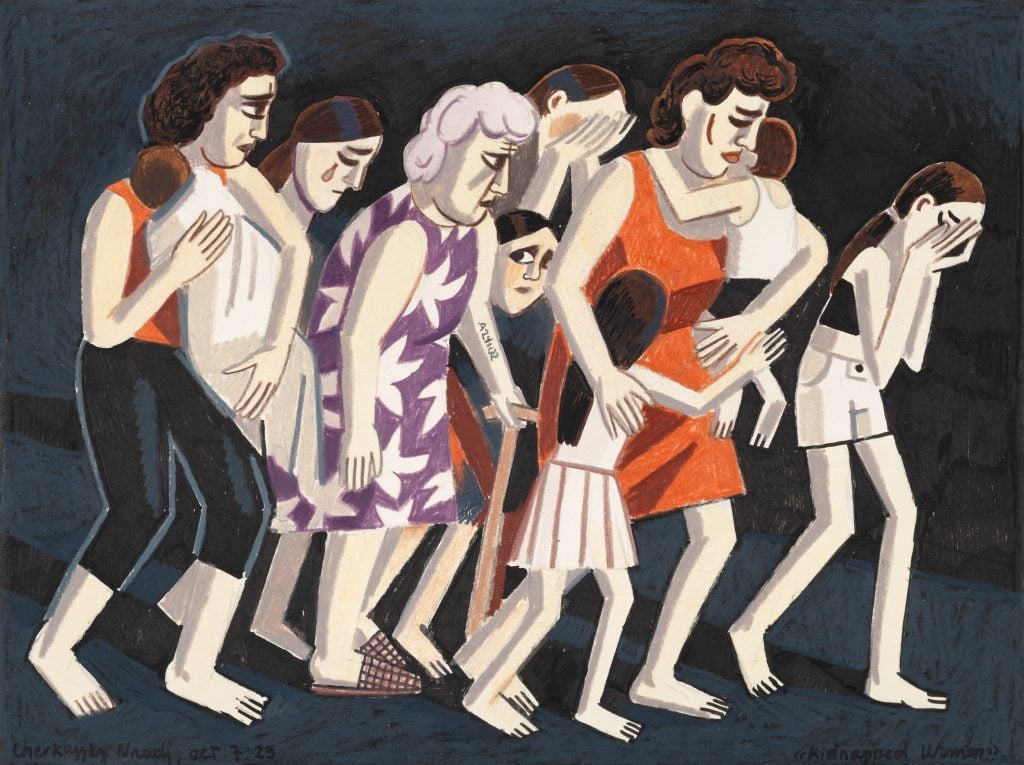
Zoya Cherkassky, Kidnapped Women, (2023). Courtesy: Fort Gansevoort
Only one work, Kidnapped Children, depicts real people, Cherkassky said. At the time she made the work, 18 kids were thought to be kidnapped and she drew their faces to raise awareness for the “Bring Them Back Home” campaign, she said.
The museum wall text notes: “Later counts reveal that almost 40 children were abducted. Since Cherkassky created this work in October, many of these children have been released, but as of early December, over one hundred adults and children are still in captivity.”
“No drawing can compete with photography in terms of being graphic,” she said. “I am very grateful to the Jewish Museum for not being afraid to show this work at the time when a lot of organizations, even Jewish ones, are scared to present the Israeli perspective.”
More Trending Stories:
Art Dealers Christina and Emmanuel Di Donna on Their Special Holiday Rituals
Stefanie Heinze Paints Richly Ambiguous Worlds. Collectors Are Obsessed
Inspector Schachter Uncovers Allegations Regarding the Latest Art World Scandal—And It’s a Doozy
Archaeologists Call Foul on the Purported Discovery of a 27,000-Year-Old Pyramid
The Sprawling Legal Dispute Between Yves Bouvier and Dmitry Rybolovlev Is Finally Over